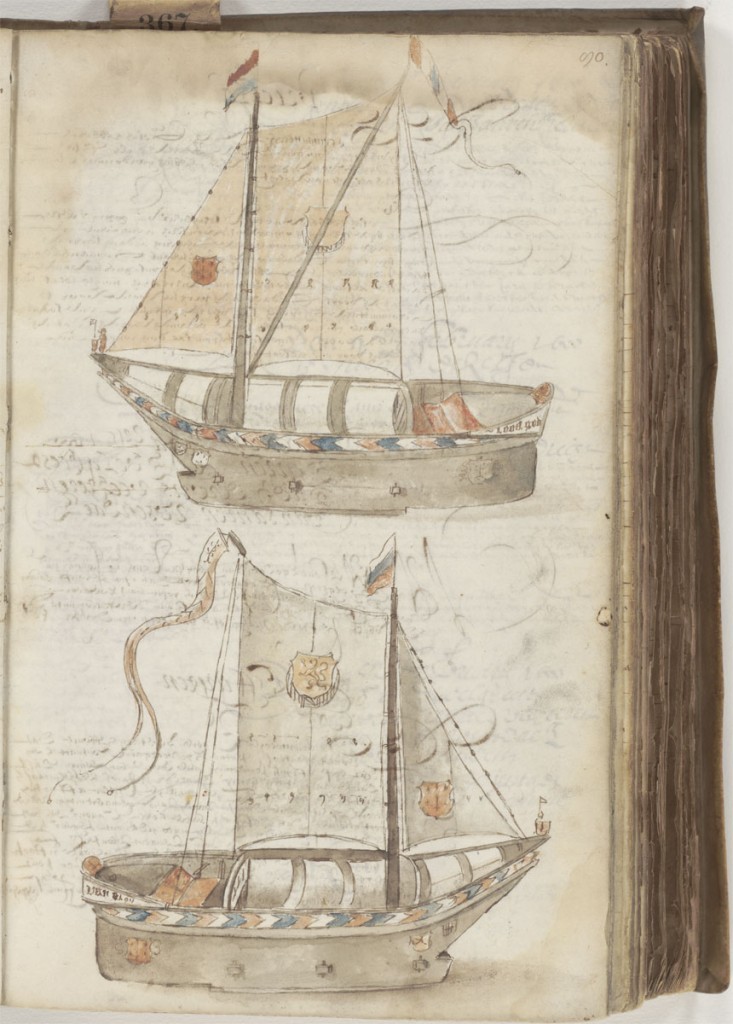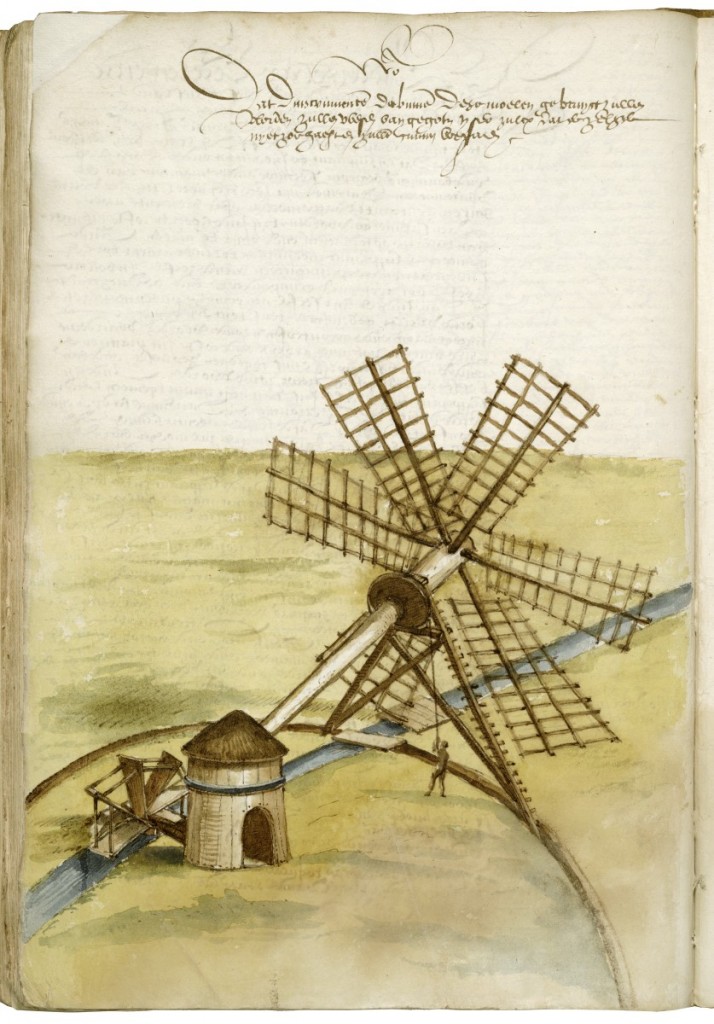When it comes to inventions, History had quite a few failures. When we think of inventions, many of us think of the Light Bulb, the Parachute and we usually can name inventors like including Leonardo da Vinci, Thomas Jefferson and Albert Einstein. In today's article we've focused on History's Weirdest Inventions which failed to make the grade and live on to the present day.
The idea for an invention may be developed on paper or on a computer, by writing or drawing, by trial and error, by making models, by experimenting, by testing and/or by making the invention in its whole form. Brainstorming also can spark new ideas for an invention. Collaborative creative processes are frequently used by engineers, designers, architects and scientists. Co-inventors are frequently named on patents.
History shows that turning the concept of an invention into a working device is not always swift or direct. Inventions may also become more useful after time passes and other changes occur. For example, the parachute became more useful once powered flight was a reality.
Sit back and take a look at these 20 of History's Weirdest Inventions!
Manual dredger
Workers operated the so-called bucket dredger with their arms and legs using stepper boards. The machine is a small model, but whether it was actually realized is unknown.
Amphibious bicycle
This land-and-water bike can carry a load of 120 pounds; Paris, 1932.
Ice sailboat
In the 17th century, it was so cold that meteorologists spoke of a Little Ice Age. The ice sailboat addressed the challenge of transporting goods over frozen lakes and rivers. Designed by A. Terrier, January 17, 1600.
Wetlands windmill
A windmill for draining wetlands, lightweight enough to function in marshy areas. It was designed by C.D. Muys in 1589 but was never built.
Clap skate
In 1936, inventor R. Handl came up with the movable heel plate, but it wasn't until 1996 that this concept revolutionized skating.
Loetafoon
A turntable linked to a film projector. It comes with single, dual and triple turntable. Designed by F.B.A. Prinsen, 1929.
Booted rubber boat
Drawing of a 'pneumatic sports- fish and hunt boat,' an inflatable boat for one person with boots attached; The Netherlands, 1915
Car With Shovel For Pedestrians (Paris, 1924)

Kind of shovel on a car. Purpose: reducing the number of casualties among pedestrians.
Early GPS (1932)
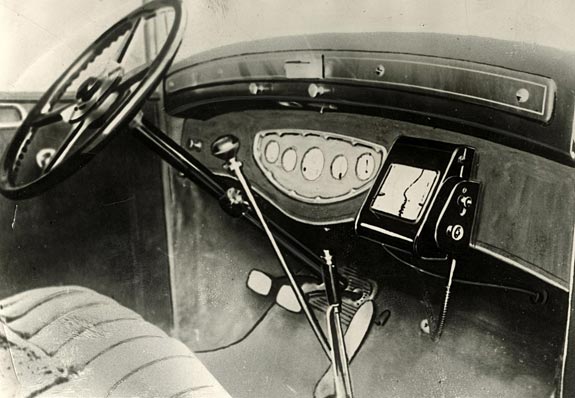
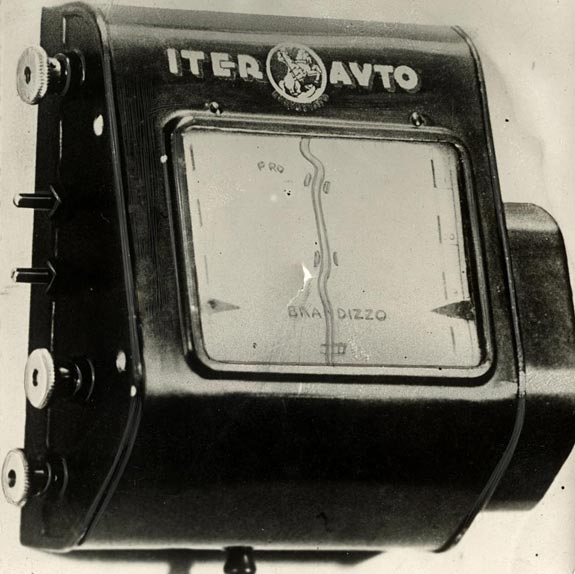
Sort of TomTom, early tripmaster. Works using rolling key map. The map passes the screen in a tempo that depends on the speed of the car.
Folding Emergency Bridge (Netherlands, 1926)
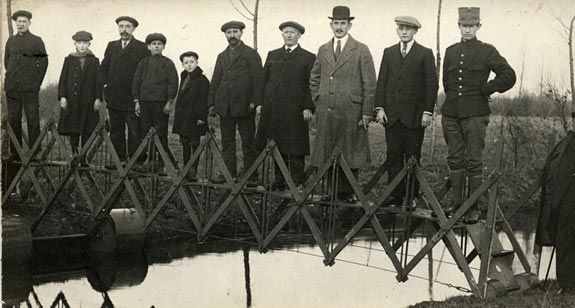
Folding bridge for emergencies, invented by L. Deth can easily be transported on a handcart.
Faxed Newspaper (1938)

In 1938 the first wireless newspaper was sent from WOR radiostation in New York. Photo shows children reading the children’s page of a Missouri paper.
Face Protection From Snowstorms (Canada, 1939)
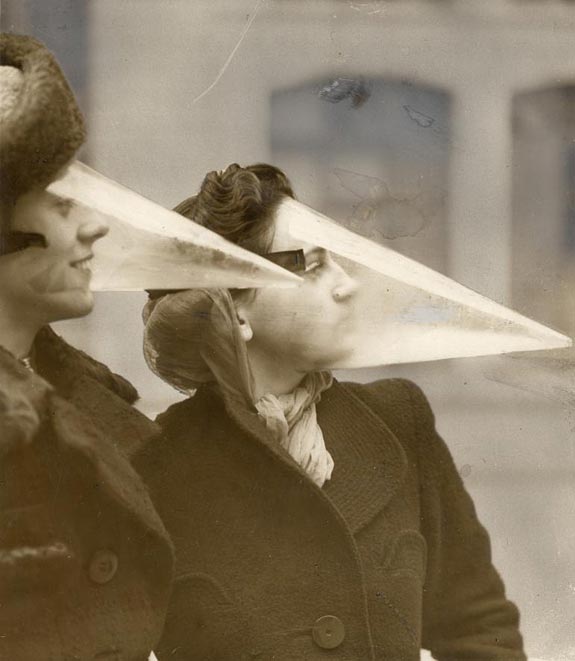
Used to protect ones face from snowstorms. Canada, Montreal, 1939.
Revolver Camera (New York, 1938)
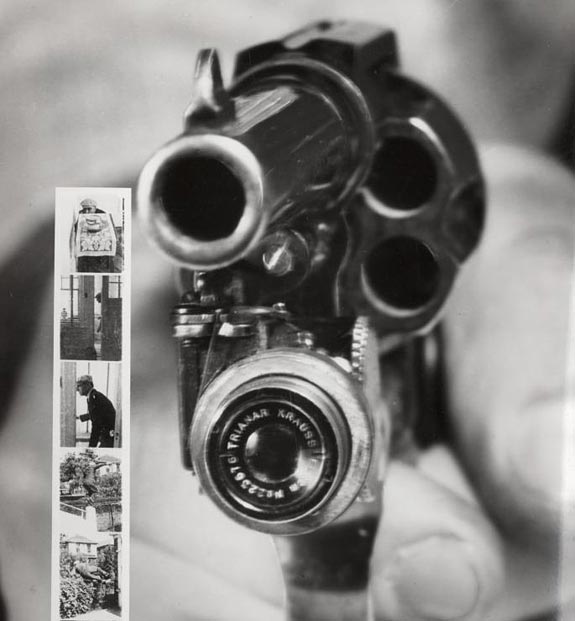
Colt 38 carrying a small camera that automatically takes a picture when you pull the trigger. At the left: six pictures taken by the camera.
Gas War Resistant Pram (England, Hextable, 1938)
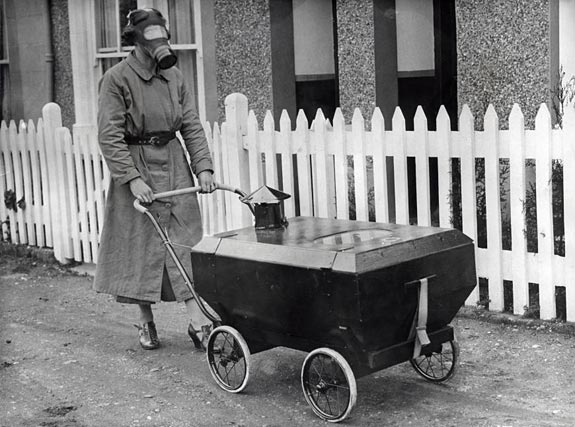
Glasses For Reading In Bed (England, 1936)

Hamblin glasses. A pair of spectacles especially designed for reading in bed.
Bike Tyre Used As Swimming Aid (Germany, 1925)
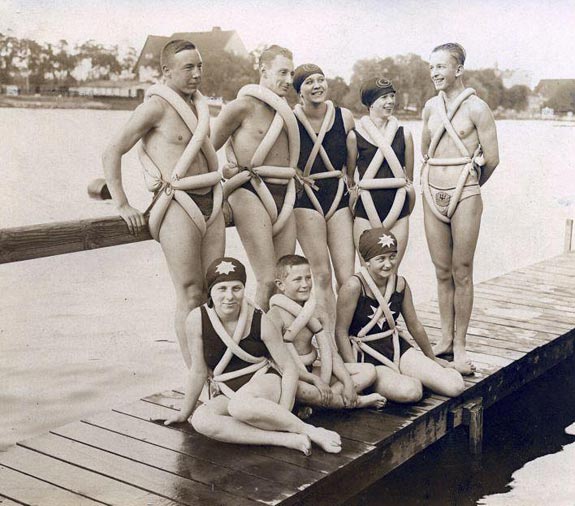
A group of youngsters tied a bike tyre around the body as a swimming aid.
Booted Rubber Boat (Netherlands, 1915)
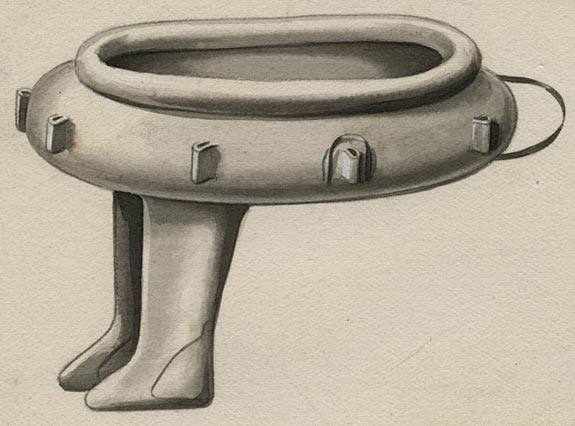
Drawing of a “pneumatic sports- fish and hunt boat”, an inflatable boat for one person with boots attached.
Wooden Bathing Suits (USA, 1925 )
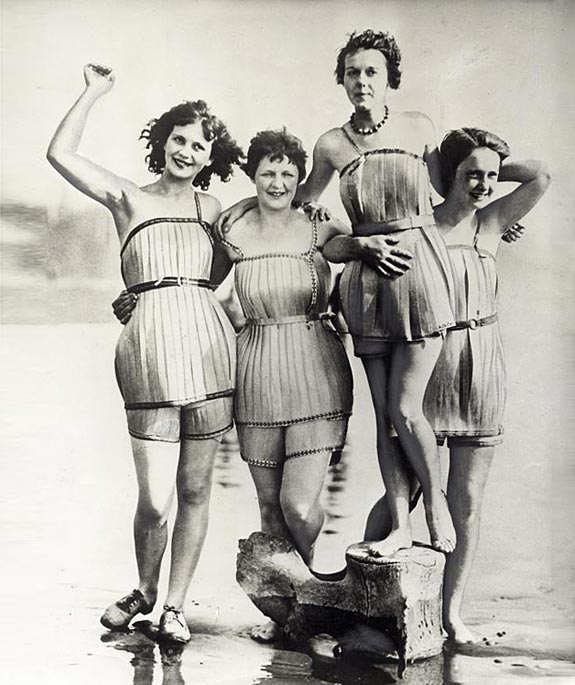
Wooden bathing suits, supposed to make swimming a lot easier. Haquian, Washington, USA, 1929
One Wheel Motorcycle (1931)
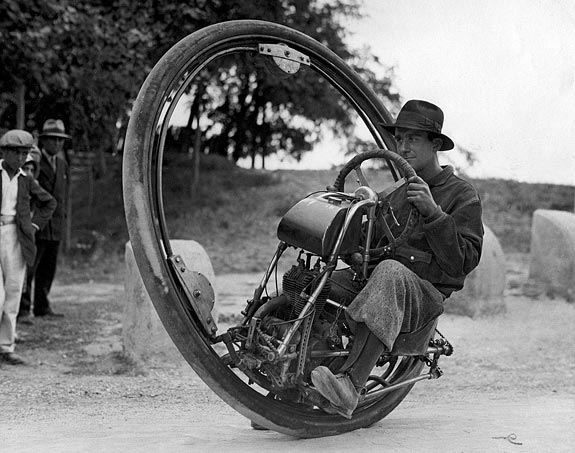
One wheel motorcycle (invented by Italian M. Goventosa de Udine). Maximum speed: 150 kilometers per hour ( 93 Mph).
Amphibious Bike ‘Cyclomer’ (Paris, 1932)
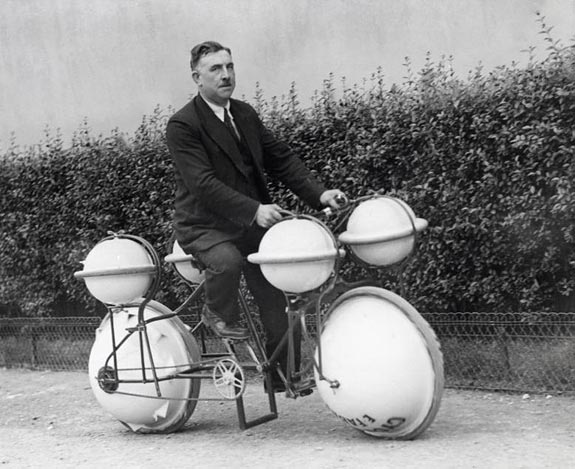
The Cyclomer, a bicycle on land and water can ride with a load of 120 pounds.
All Terrain Car (England, 1936)

All terrain car able to descend slopes up to 65 degrees.
Radio Pram (USA, 1921 )
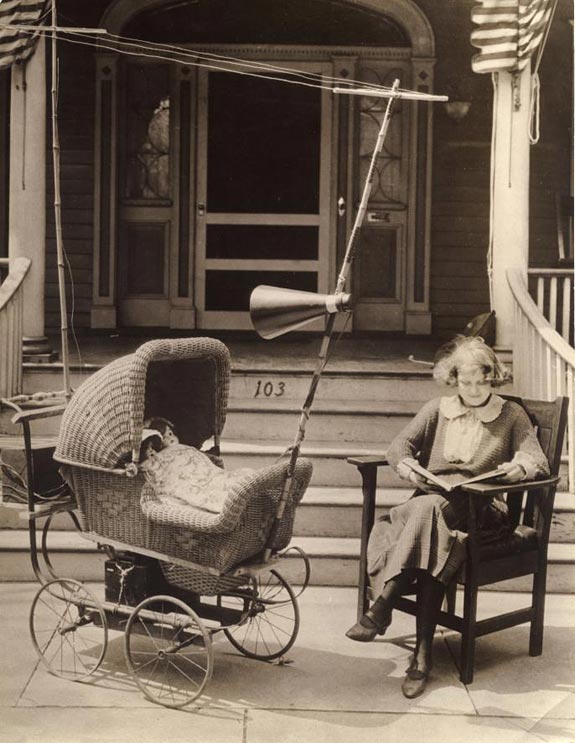
Pram provided with a radio, including antenna and loudspeaker, to keep the baby quiet.
Radio hat (USA, 1931)

Portable radio in a straw hat, made by an American inventor.
Bulletproof Glass (New York, 1931 )
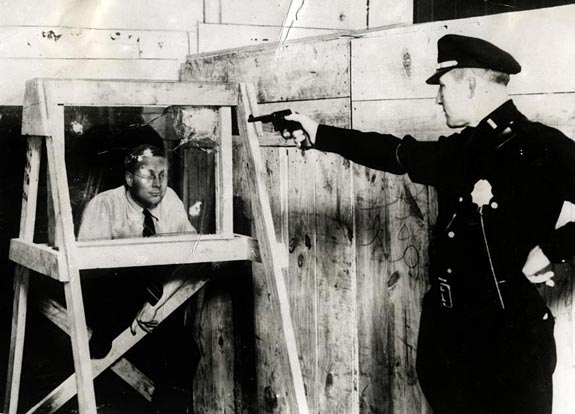
This one is not forgotten, however the testing of the bulletproof glass was too interesting not to include here – demonstration by the best rifle man of the New York police, 1931.
Extensible Caravan (France, 1934)
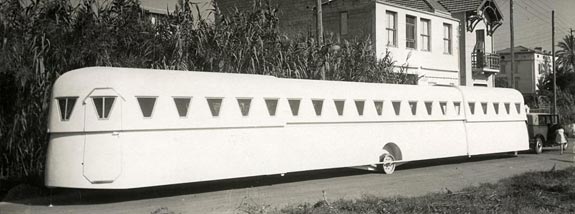
Extensible caravan, built by a French engineer.
Piano For The Bedridden (UK, 1935)
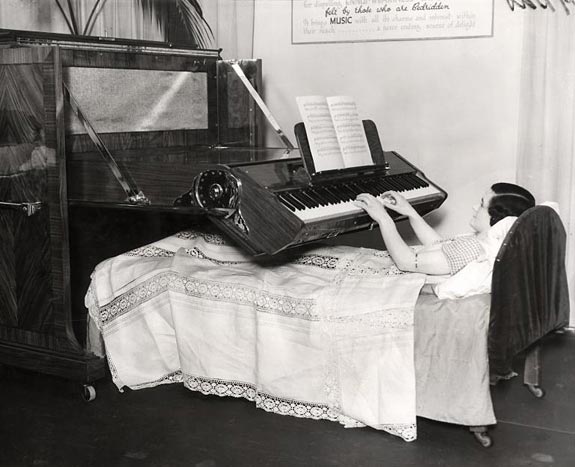
Piano especially designed for people who are confined to bed.
Electrically Heated Jacket (USA, 1932)

Electrically heated vest, developed for the traffic police in the United States. The power is supplied by electric contacts in the street.



